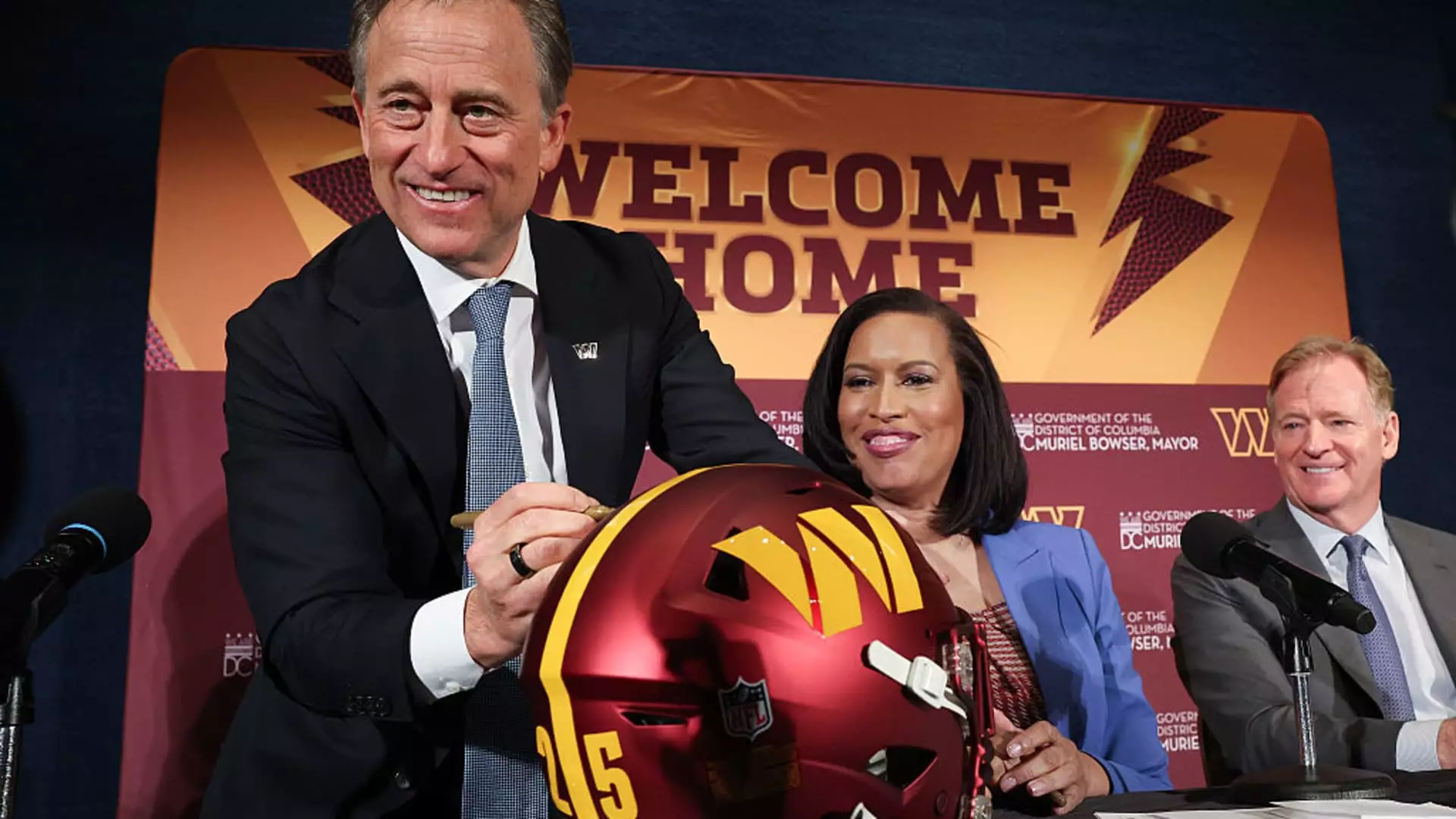The Washington Commanders’ anticipated return to the District of Columbia marks a significant moment in both sport and urban development. Set to relocate from Landover, Maryland, back to the historic grounds of Robert F. Kennedy Memorial Stadium, this decision has sparked a flurry of enthusiasm mixed with skepticism among fans and residents alike. The NFL franchise has pledged a staggering $2.7 billion investment into the new stadium setup. However, there are fundamental challenges and questions that arise from such a massive undertaking, particularly in a city already grappling with housing accessibility and urban poverty.
Financial Burdens vs. Promises
While the city government’s contribution of $500 million certainly sounds generous, the math leads us to a concerning reality. The total expenditures associated with this multi-billion-dollar development amount to $3.7 billion, a figure that could significantly impact infrastructure planning. With tax revenue estimates of $4 billion over three decades and promises of direct spending growth, it’s important to consider: who really benefits? Will the promised 2,000 permanent jobs and economic revitalization goals materialize for all, or primarily for the affluent? The return of the Commanders must be closely monitored to ensure these inequalities do not entrench further.
Rediscovering Sports Culture
Sports have long been celebrated as a unifying force, and RFK Stadium is steeped in a glorious past that evokes nostalgia for many Washingtonians. The team’s history of capturing three Super Bowl titles has created an emotional connection that recent fans may find hard to cultivate. Team owner Josh Harris’s sentiments on honoring legacy are commendable, yet this project ignites larger questions about modern sports culture: Is it time to re-examine the role of sports franchises in urban development? Are they catalysts for community or mere corporate highlight reels?
Redevelopment or Gentrification?
The new stadium plans promise not only a modern sports venue with a capacity of 65,000 seats but also additional perks like housing, parkland, and restaurants. However, with the allure of “redevelopment” comes the creeping specter of gentrification, which has already transformed many neighborhoods in D.C. into playgrounds for the affluent at the expense of long-standing residents. Will the integration of housing indeed assist locals, or will it become another source of displacement?
A Focus on Inclusivity
Mayor Muriel Bowser’s visions of a multifaceted campus filled with recreation, retail, and entertainment sound appealing. However, there’s a glaring need for these projects to prioritize inclusivity. As the city embraces what it calls a ‘Sports Capital,’ it must not sideline local communities whose needs may not align with the grand developmental narrative. The success of the Commanders’ return will necessitate an unwavering commitment to the diversity of experiences and voices within the community.
The path forward may be fraught with complexities as the Commanders gear up for their 2030 milestone, but a critical discussion regarding fairness, accessibility, and community cohesion is essential. As the excitement builds, stakeholders must remain vigilant to ensure that the rise of the Commanders does not overshadow the broader socio-economic implications for D.C.’s residents.


Leave a Reply